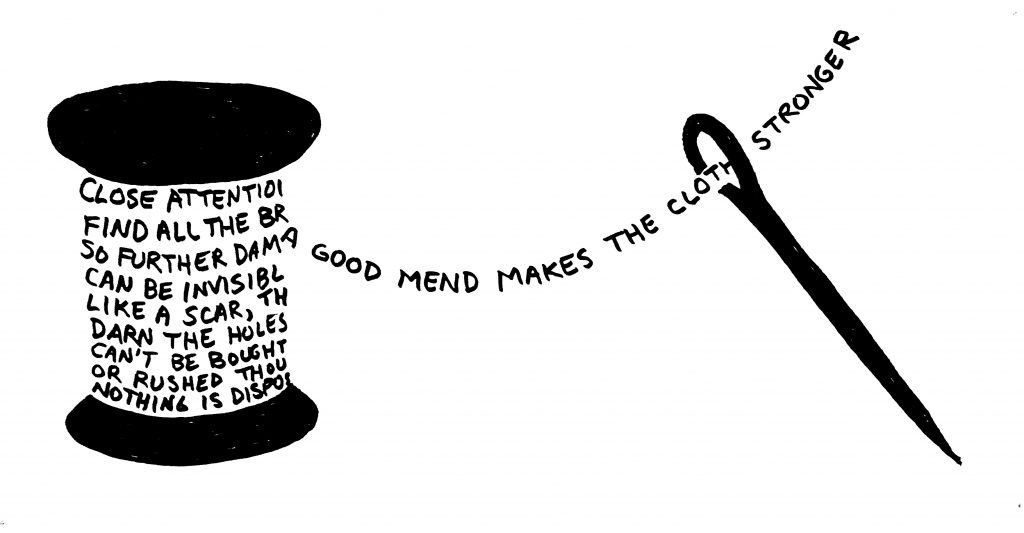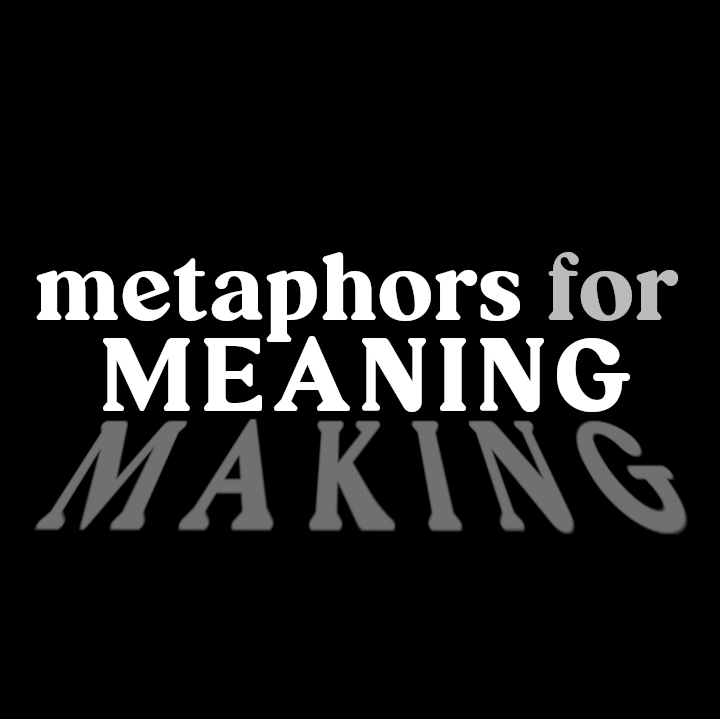Hello! We’re Still in a Pandemic here!
Stay Home and Mend!
Mending is what we do to cover a hole or break in the fabric that inevitably happens because of everyday wear and tear. Long ago people took scraps of cloth used in making clothes to patch over these breaks. People have continued to do that for generations. When people stopped having rags or scrap piles in their homes, companies thought up presewn funky patches you could buy to sew or iron on to cover the holes in the cloth that covered your knees or elbows. Or that you could just add for flair.
Of course then it became more fashionable to have pre-made rips in the fabric of all things. But not just naturally torn from long wear. Fashion so often–and so creepily–mirrors culture. ..A culture that charges ridiculous amounts of money for pants to look worn and “rugged” for people who never wear anything long enough for it to get worn or do anything that would amount to being “rugged.” …A culture that charges you to have “distressed fabric” while distressing the workers who sweat over the machines and chemicals that create that fabric.. Such a culture can seem pretty twisted and perverse.
But mending really used to be a thing. And many of us still do it.
These are darning eggs. An old tool but still in use by those who still darn their socks. You slip the darning egg into the sock so that you can flatten out the place where the hole is and make sure that when you mend you don’t sew one side of the sock to the other – it’s good to make sure we don’t make things worse when we do the mending.
Most people today just buy a new pair when they get a hole in their socks. Probably some of the few people who darn their socks are those who knit them in the first place. Because they know the work that went into them. So they take the time to mend.
There are so many things and people in our lives far beyond knitting that we say we cherish and yet we don’t take the time to do the mending necessary to reduce harm. We’ve developed a predatory capitalistic culture which spreads the misinformation that everything and everyone is disposable. And people do literally throw away all kinds of very usable things. And people and systems chew up and dispose of people and cultures, too.
But no matter what our death culture teaches, you can not replace everything and everyone with a swipe of your card or an online purchase. It’s no wonder folx grow up in our culture emotionally bankrupt and bereft of a real understanding of relationship and community and resilience. Because the only way many of us know how to “fix” anything is to throw money at it. To throw it away and buy something to replace it. And when that inevitably doesn’t work, it’s no wonder we have such a high incidence of violence, addiction, and depression. Because we have so many broken places and so few among us who know how to mend.
We must find our way back to the lost art of MENDING.
You can mend just about any broken place, but a good, lasting mend can’t be bought or rushed. A good mend requires close attention to detail. It’s less about fancy skills, but slow, deliberate, intentional care. It’s important to find all the breaks so that further damage isn’t done. Mends can sometimes be invisible, but rarely. Like a scar, the more serious the damage, the more visible the mend..
But a good mend makes the cloth stronger and more beautiful.
Sometimes we don’t have to look outward to see what needs mending. Because often there’s a space inside us that needs tending; that needs to know we are worthy of being loved and capable of being loving. So let’s work on our mending skills: for ourselves, our relationships, and our whole community. Because no one is disposable. Not ever.

Possible Questions/Further Thoughts to Explore
What broken or damaged things in your life to you feel comfortable fixing? (clothes, furniture, appliances, etc.) Do you wish you had more skills for fixing things? If so, how might you gain them? Who could you learn from?
Do you think the ability to mend or fix things is valued in our culture? Why or why not? Do you think that’s changed over time, generationally, etc.?
Many have turned back (or for the first time) to crafting, making, diying, etc. during the pandemic. Do you think this will stick? Will people move forward with these new found skills, hobbies, interests, etc.? Or will they be passing fads?
What might it mean to “mend” a relationship? What about the description of different kinds of mends – invisible versus visible – resonated for you in how a person, a community, a place… recovers from a trauma? How do we take the time to mend in community? How can we be intentional and tender in the work?
Explore the problem with wanting to “fix”a thing and how that can lead to saviorism. But also how we can often focus on an end result and not the process, the relationship itself. The craft/art of mending speaks very much to this delicacy of intention.
